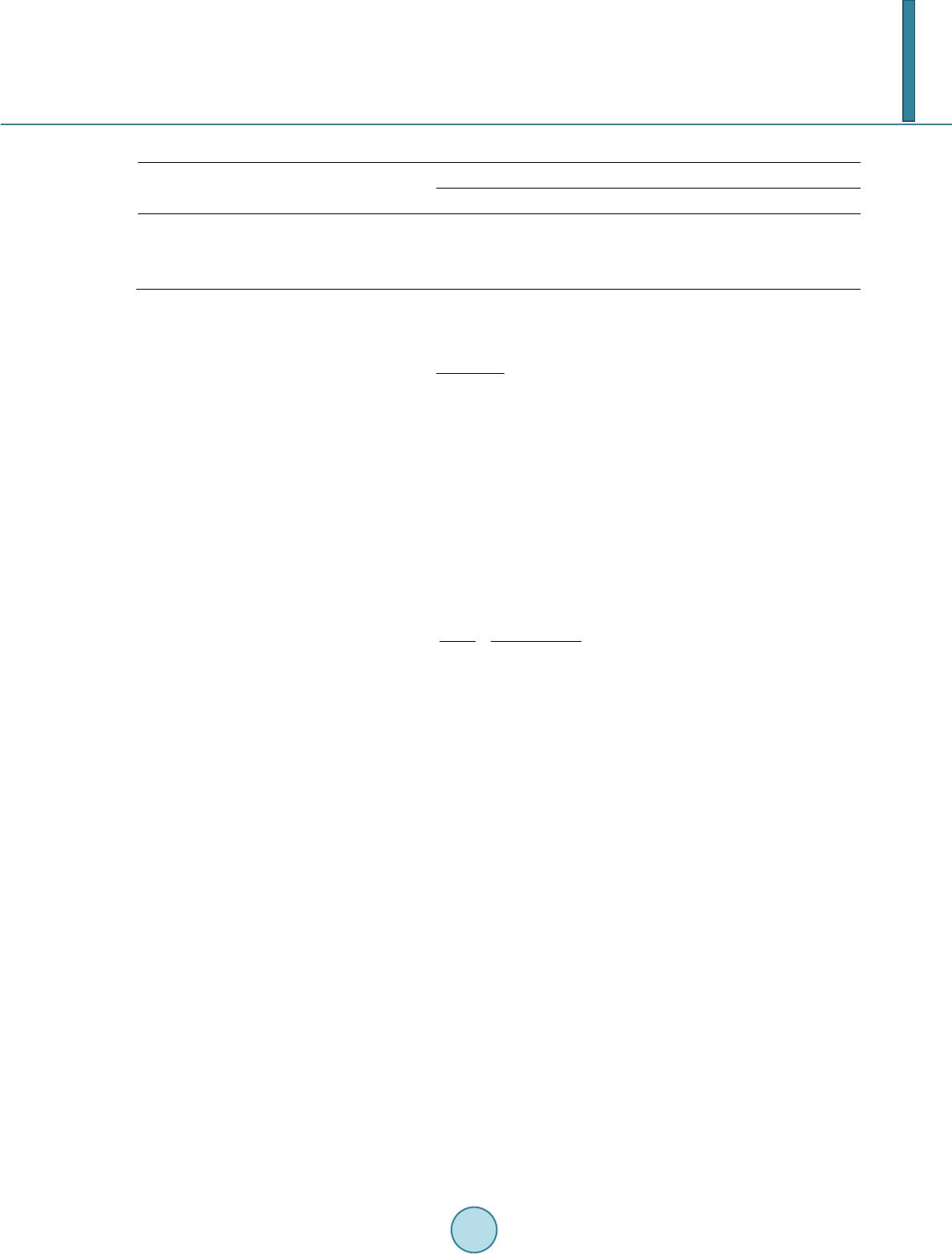
W. Sridech, T. Chitsomboon
Table 2. AEP and COE of the optimized and the original wind turbine.
Area AEO [MW.h/year]
Original Smoothed
Nakhonratchasima 40.96 52.40
Phetchaboon 38.52 49.08
Ubonratchathani 12.51 14.06
where Pt was power of wind turbine produced at instantaneous wind speed.
The worthy of investment normally evaluated by COE which was calculated using the following equation [5]:
(7)
In this equation, TC was the turbine cost ($/kW.h) [6]. For the balance of station BOS varied with the ma-
chine rating ($200/kW). The fixed charge rate FCR was 11%/year. The AEP was considering to be 98% availa-
bility. Finally, the operation and maintenance O&M was fixed at $0.01/kW.h.
From Equation (7), TC depends on blade cost which was determined according to its weight. Assuming the
blades were manufactured by E-glass using price of $20/kg where the blades represent 20% of the total turbine
cost.
For evaluating the blades weight needed to know the skin thickness distribution along the blade. The skin thick-
ness was determined according to the maximum allowable stress (
) corresponding to the material strength
of 110 MPa. If the residual stresses were taken into account, the
equal to 94 MPa was used.
The total stress acting on blade composed of two components, first tensile stress due to centrifugal force and
stress due to bending moment, as shown in Equation (8):
[ ]
() ()/2
()
() () ()
r
Mr tr
Fr
rAr Ir
σ
= +
(8)
where
and a Safety margin
equal to 10. The cross-section was modeled as an I-beam with-
out a shear web as shown in Figure 3. It represented the overall skin thickness that was subjecting the load.
The maximum stress acting on blade was calculated in the condition that wind turbine was parked and fully
exposed to the storm. According to the International Electrotechnical Commission (IEC) [7], the IEC 50-year
extreme wind speed for a wind Class II (59.5 m/s) was used to compute the blade loads. In consequence, the
minimum skin thickness, blade weight and blade cost as well as turbine cost were determined.
5. Result and Discussion
The op timal blade shapes for each case study are shown in Figures 4-6. In the optimization process, blade was
divided into many elements so that the number of elements then brought about the discontinuity of the op timized
points. However, increasing the number of elements made more reliable results but consumed more computa-
tional resource as well. Hence, the smoothed line was made for a feasib ility of blade manufacturing. In addition,
wind turbine with smoothed blades produced higher performances compared with the original one as shown in
Figure 7 and Figure 8, particularly oper ating at the mean wind speeds of the studied sites.
Normally, the design of optimal blade was carried out using one design wind speed. Due to the fact that wind
turbine was operating among fluctuated wind speed at a site. Thus, the pitch regulation was required to optimize
the annual yield for a given wind statistic. As the results, the optimal w in d turbines operated under the three
cases of wind statistic in Nakhonratchasima, Phetchaboon and Ubonratchathani produced the AEP of 52.40,
49.08 and 14.06 MWh at pitch angle of 3˚, 2˚ and 2˚, respectively as shown in Figure 9. Whereas the original
wind turbine produced the AEP of 40.96, 38.52 and 12.51 MWh which were decreased by 28.38%, 35.08 % and
15.96% compare with the optimized results. The results from Table 3 could be summarized that the COE eva-
luated from the optimal wind turbines could be reduced by 13.62%, 10.67% an d 31.83% compare with the orig-
inal results.
As the results, the optimal wind turbine operated under the higher potential sites contributed the greater an-
nual yield which leaded to the lower COE (Figure 10). However, the high profit margin does not only rely on a